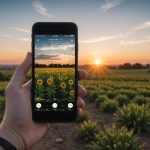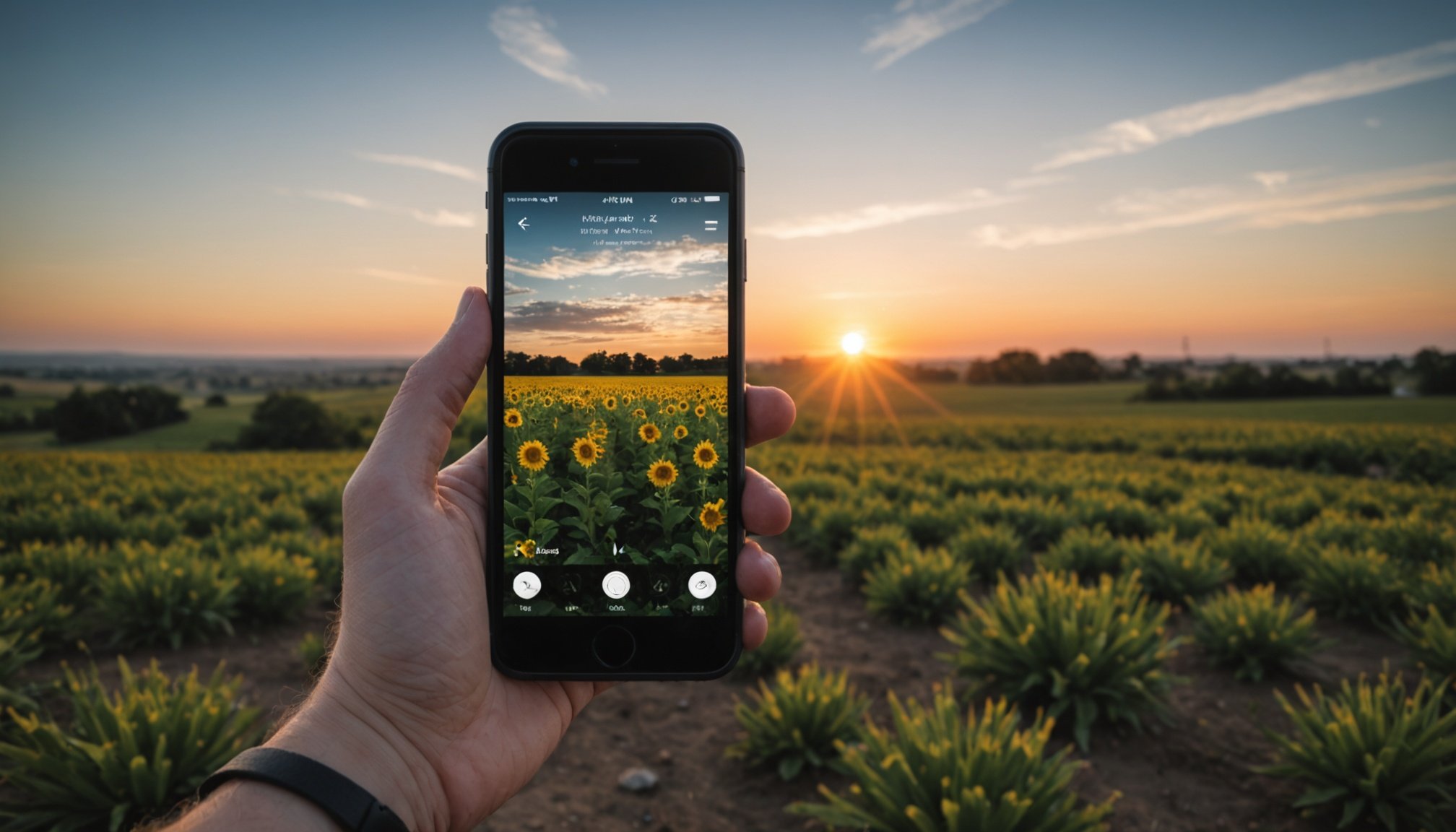Unlocking the Art of Smartphone Photography: Key Strategies for Taking Breathtaking Photos with Your Mobile Device
In the era of advanced smartphone cameras, capturing stunning photos is no longer the exclusive domain of professional photographers. With the right techniques and a bit of practice, you can transform your smartphone into a powerful photography tool. Here’s a comprehensive guide to help you unlock the full potential of your smartphone camera and take breathtaking photos.
Understanding Your Smartphone Camera
Before diving into the nitty-gritty of smartphone photography, it’s essential to understand the capabilities and limitations of your camera.
Topic to read : Smartphone savvy: seamless management of smart home air purifiers for cleaner indoor air
Camera App and Settings
The camera app on your smartphone is more than just a point-and-shoot interface. It offers a range of settings and features that can significantly enhance your photos.
- Manual Mode: Many modern smartphones come with a manual mode that allows you to adjust settings like ISO, exposure compensation, and focus. This gives you more control over the look of your photos.
- HDR (High Dynamic Range): This feature combines multiple shots taken at different exposures to create a single image with better contrast and detail.
- Portrait Mode: This mode uses the camera’s depth sensors to create a bokeh effect, blurring the background and highlighting your subject.
| Feature | Description |
|
|-----------------------------------------------------------------------------|
| Manual Mode | Adjust ISO, exposure compensation, and focus manually. |
| HDR | Combines multiple shots for better contrast and detail. |
| Portrait Mode | Uses depth sensors to blur the background and highlight the subject. |
| Night Mode | Optimizes low-light shots by reducing noise and improving brightness. |
| Burst Mode | Takes multiple shots in quick succession to capture the perfect moment. |
Experimenting with Different Cameras
If your smartphone has multiple cameras (e.g., wide-angle, telephoto, ultra-wide), experiment with each to see what works best for your shot.
Also read : Unleashing your smartphone”s power: top techniques for an enhanced augmented reality gaming experience
- Wide-Angle Lens: Great for landscapes, group shots, and capturing more of the scene.
- Telephoto Lens: Ideal for zooming in on distant subjects without losing quality.
- Ultra-Wide Lens: Perfect for capturing more of the scene, especially useful in tight spaces.
Mastering the Art of Lighting
Lighting is one of the most critical elements in photography, and it’s no different when using your smartphone.
Natural Light
Natural light is often the best light for photography. Here’s how to make the most of it:
- Position Near a Window: Natural light from a window provides soft, even illumination that is ideal for product photography and portraits.
- Avoid Harsh Midday Sun: The direct sunlight during midday can create harsh shadows and unflattering light. Opt for the golden hour (early morning or late afternoon) for softer, warmer light.
Artificial Light
When natural light isn’t available, you can use artificial light to your advantage.
- Use Softbox Lights or Diffusers: These can soften the light and reduce harsh shadows.
- Experiment with Different Light Sources: Table lamps, floor lamps, or even string lights can add interesting textures and moods to your photos.
Stabilization and Consistency
A stable camera is crucial for clear, sharp photos.
Use a Tripod
A tripod helps in stabilizing your camera, reducing blur and ensuring consistency in your shots.
- Consistent Angles: If you’re taking multiple photos of different products, a tripod helps maintain the same angle and framing.
- Low Light Shots: In low light conditions, a tripod allows you to use slower shutter speeds without introducing camera shake.
Focusing and Exposure
Understanding how to focus and adjust exposure can make a significant difference in the quality of your photos.
Focusing Techniques
- Tap to Focus: Most smartphone cameras allow you to tap on the screen to focus on a specific area.
- Manual Focus: Some camera apps offer manual focus options, which can be adjusted using a slider.
Exposure Adjustments
- Adjust Exposure Compensation: Tap on the sun/cloud icon and slide your finger up or down to adjust the brightness of your image.
- Use HDR: High Dynamic Range (HDR) can help balance the exposure in scenes with both bright and dark areas.
Editing Your Photos
Editing is a crucial step in enhancing your photos and making them look professional.
Basic Editing Tips
- Brightness and Contrast: Adjust these settings to make your image pop. Be careful not to overdo it, as high brightness can make the image look washed out, and high contrast can flatten the colors[1].
- Saturation: Increasing the saturation slightly can make colors more vibrant, but be cautious not to make the image look unnatural.
- Crop and Straighten: Cropping and straightening can help improve the composition of your photo.
Using Editing Apps
There are several editing apps available that can help you enhance your photos.
- Canva: Known for its ease of use and variety of templates, Canva is great for creating social media posts and other visual content[3].
- PicMonkey: Offers a range of editing tools, including filters, effects, and the ability to remove backgrounds[3].
- Unfold: Perfect for creating stories on Instagram and other social media platforms, with various templates and editing options[3].
Showcasing Your Subject from Multiple Angles
To give your audience a comprehensive view of your subject, it’s important to capture it from different angles.
Product Photography
- Front, Side, and Back Views: Show the product from multiple sides to give customers a clear understanding of what they are buying.
- Detail Shots: Zoom in on specific features or details to highlight the quality and craftsmanship.
Portrait Photography
- Full Body Shots: Capture your subject from head to toe to provide context.
- Close-Up Shots: Focus on the face or specific expressions to add depth and emotion.
Practical Tips for Better Smartphone Photography
Here are some practical tips to help you improve your smartphone photography skills:
Clean Your Lens
A dirty lens can significantly affect the quality of your photos. Make it a habit to clean your lens regularly.
Use the Right Apps
Experiment with different camera apps to find one that offers the features you need. Some apps provide more manual controls or special effects that can enhance your photos.
Practice Makes Perfect
The more you practice, the better you will become at understanding your camera and the techniques that work best for different situations.
Smartphone photography is not just about pointing and shooting; it involves understanding your camera, mastering lighting, stabilizing your shots, and editing your photos. By following these strategies and practicing regularly, you can unlock the full potential of your smartphone camera and take breathtaking photos that rival those taken with professional equipment.
As photographer and educator, Peter McKinnon, once said, “The best camera is the one that’s with you.” With the right techniques and a bit of creativity, your smartphone can become an indispensable tool for capturing stunning images. So, go ahead, experiment with different settings, lighting conditions, and editing apps, and watch your photography skills soar.











